#sexypink/Caribbean Art History
Photo
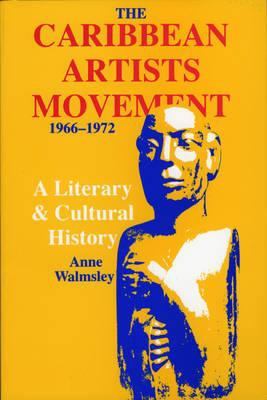
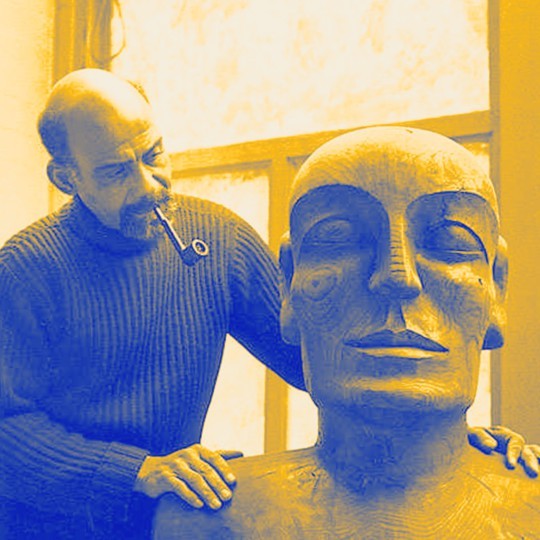

Sexypink - Caribbean Artists Movement.
#sexypink/Caribbean Artists Movement#sexypink/Caribbean Art History#sexypink/West Indian Artists abroad#sexypink/painting#tumblr/CAM#tumblr/Caribbean Artists Movement#nationhood#CAM#Caribbean Artists Movement#caribbean aesthetics#painting#Caribbean Artists abroad
2 notes
·
View notes
Text

Sexypink - A huge loss to Trinidad and Tobago. Thank you Geoffrey for your vision, kindness and love.
..............................

Geoffrey's contribution to Art history. He was the definitive writer on Cazabon.

An image of one of Cazabon's paintings.
Finally, a beautiful tribute to Geoffrey MacLean from one of many friends.
.................................
TRIBUTE TO GEOFFREY MACLEAN. In each island nation of the Eastern Caribbean, economies of scale make it so that there are only one or two (and if they are lucky, three or four) local experts in some field of study which has little to do with industry or clerical work but everything to do with the national character and its history. Because they are often without precedent, these experts often have had to travel abroad for their training or are otherwise self-trained in their chosen sector of the liberal arts/humanities/social sciences.
Trained architect and avocational art historian Geoffrey MacLean was one of these indispensable sages in the field of visual studies and the built environment. He was the world’s foremost specialist on nineteenth-century landscape and genre painter Michel Jean Cazabon. Cazabon was a partially unwitting member of a global late colonial/early post-colonial landscape painting tradition that encompassed artists such as Mexican José María Velasco, the Chartrand brothers of Cuba, Filipino painter Fernando Amorsolo, and the painters of the Hudson River School in the United States. What all of these artists had in common was their urgent need to capture and pay tribute for posterity to the natural beauty of their respective lands before that “Edenic” verdure was despoiled by then-already encroaching industrialization.
MacLean’s passion for Cazabon pressed him not only to hone further the scholastic abilities he had already developed at Presentation College in his native Trinidad and Bristol University in the U.K. but to travel back and forth between the Caribbean and Europe hunting down examples and collections of Cazabon’s work. He also assisted the government of the Republic of Trinidad & Tobago in the acquisition of some Cazabon works for display in its National Museum and Art Gallery.
MacLean was generous with his knowledge, his time, and with his published materials. Every time I visited him, I came home with an armful of books and catalogues (one of my favorites is an unassuming little pamphlet of a catalogue called Chinese Artists of Trinidad & Tobago which probably played some part in my decision to write the book about Sybil Atteck on which I am currently working with Sybil’s nephew Keith). In graduate school, I relied heavily on MacLean’s Cazabon books for the research I was doing on colonial Latin American and Caribbean painting. MacLean’s enthusiasm for Cazabon’s genre painting, especially his rapt verbal and written descriptions of the late 19th century painting Negress in Gala Dress (pictured here) revealed to me that Cazabon’s paintings of local “types” (e.g., “Negress” instead of named individual) was sometimes a form of real portraiture and thus departed the tipo de país-to-costumbrismo continuum that we sometimes use in Latin American art history. Cazabon loved his people too much and included too much implied biography and other narratives in those paintings, to reduce their subjects to mere “types.” His titles were thus deceptively taxonomic.
Architect, scholar, art gallery director Geoffrey MacLean’s contribution to the study and preservation of T&T’s architecture was legendary even before his passing. He has searched out original plans for fretwork houses and saved some of these architectural jewels from the bulldozers of “developers.” He has done the same for members of the Magnificent Seven around the Queen’s Park Savannah and taught workshops on both the civic and residential architecture of Trinidad & Tobago. As MacLean himself now passes into legend, we are left with the perennial question in these small and mid-sized islands of the Eastern Caribbean each with their two or three experts on local art and architecture – who will pick up the torch?
~ Lawrence Waldron
#galleryyuhself/Geoffrey MacLean#galleryyuhself/publisher/gallery owner/architect#galleryyuhself/bereavement#galleryyuhself/medulla gallery#tumblr/aquarella gallery#tumblr/cazabon books#tumblr/architect#trinidad and tobago#Geoffrey MacLean#architect#visionary#gallery owner
0 notes
Text

H a p p y N e w Y e a r
f r o m S E X Y P I N K
#sexypink/Art from the Caribbean region#sexypink/Caribbean Art and Artists#sexypink/Caribbean Art History#sexypink/Everything Art based#tumblr/Art news in the Caribbean and diaspora#tumblr/Caribbean Art#tumblr/Caribbean Artists#tumblr/Art Writing#tumblr/criticism in Art in the Caribbean#tumblr/contemporary art practice#Art
0 notes
Text
How loyal do you want to be to a telling of the story that cares little for, and even actively erases people like yourself?
- Rodell Warner
#sexypink/rodell warner#sexypink/quotes on art#sexypink/archival photography questioned#tumblr/rodell warner#tumblr/archival images#tumblr/colonial history#pre colonial history#caribbean imagery#notes
2 notes
·
View notes
Photo



S E X Y P I N K
The work of Jamaican Artist Jasmine Thomas Girvan in her own words
It has been a joy to participate in The World Reimagined, a groundbreaking art education project launched in 8 cities across the UK. The focus of the project is to transform how we understand the Transatlantic slave Trade and its impact on all of us.
.....................................................................
The World Reimagined - Mother Africa.Beyond Time and Space.
One of the main motifs on the Globe is a replica of an Akan gold weight. It shows people on a boat traversing the vast ocean.
This celebrates the insight of Ivan Van Sertima that Africans traveled across the oceans arriving in the Americas long before they were transported on Slaveships.'They came before Columbus' outlines these extraordinary voyages.
As engineers of possibility, Africans evolved their own advanced guidance systems to endure and survive treacherous crossings. This was a dialogue with the stars but more importantly supported by 'constallational thinking' central to African cosmology and life. Anansi, the spiderman - Akan God of stories, Wisdom and knowledge and a central figure in West African folktales not only survived the voyage but consolidated African cosmology in the daily lives of Africans in the New World in our oral traditions. Anansi's domain - the spiders Web has a complex and mysterious design that has exceptional strength and flexibility. It is stronger than steel, almost invisible yet can survive winds that exceed hurricane strength.
The psyche of Africans who survived the Transatlantic slave Trade like the spiderweb is resilient and indestructible. Like the strands of the spider's Web, it is made up of infinite diaphanous strands of Ancestral frequencies. I believe that our resilience and identity continue to be nourished by this ancient wisdom. It reverberates in our music, spiritual practices, food, architecture and every imaginable facet of life.
#sexypink/Jasmine Thomas Girvan#sexypink/Jamaican Artist in London#The World Re-imagined#projects#education#Art#Caribbean/British encounters#Jamaican Artists Jamaican Artist Jasmine Thomas Girvan#transatlantic slave trade#slavery#imagery#history
26 notes
·
View notes
Photo
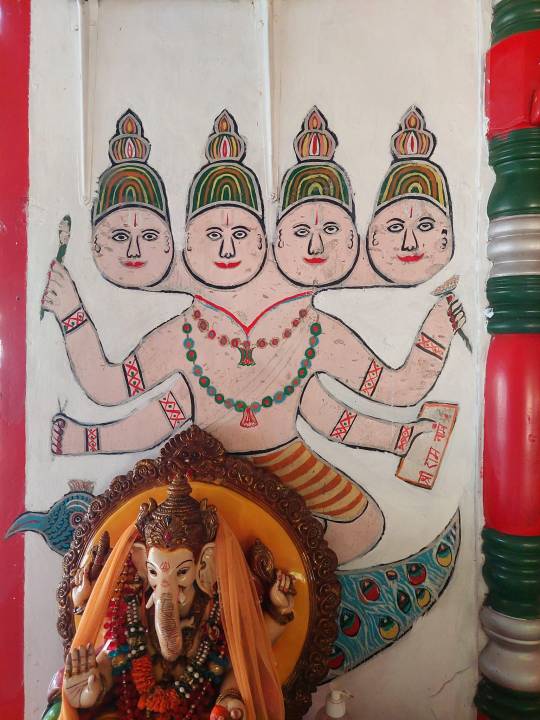

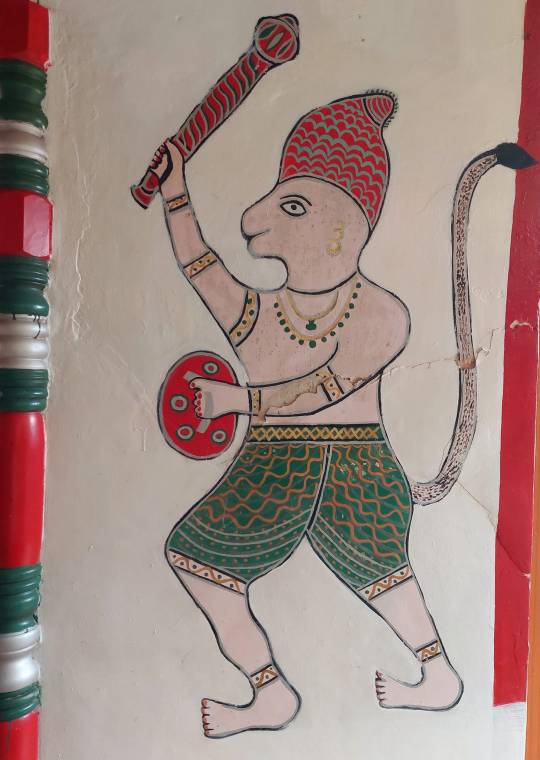

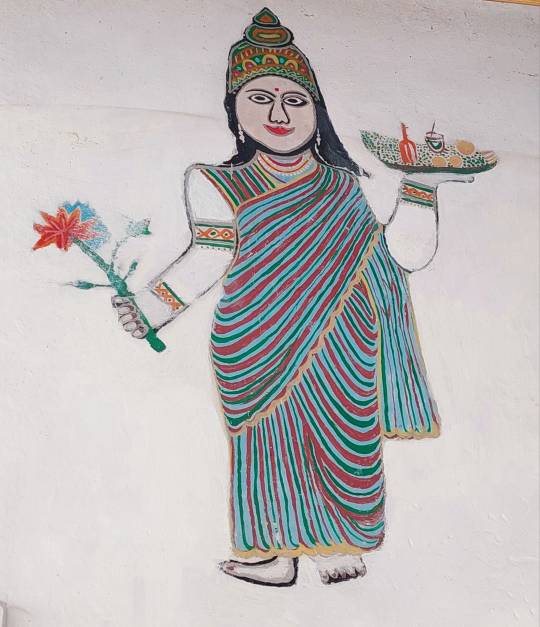

Sexypink - From the Facebook page of Niala DB
On this Indian Arrival Day (May 30th 2023), I present you with original artwork- temple murals - from the Indentured ancestors which have been preserved on the walls of the Moose Bhagat Hindu Temple, George Village Tableland. This religious and once tribally-important building was constructed by Pundit Mahandat Moose Bhagat Dass in 1904 and is preserved by his descendants, although it seems the pundit line is no more. This temple is written as being the second oldest in the Caribbean ( I do not have the facts to confirm this).
I don't share DNA with this possible ancestor-in law, but I thought the journey worthwhile. I feel I see a Bhagat clan resemblance in the faded photo of Moose but, that might just be wishful thinking. It was a joy to behold the art of the ancient Indentured from India. I wonder how old were the artists?
May they all continue to sleep in peace, giants they once were.
#sexypink/Indian Arrival Day 2023#sexypink/Indian murals in Trinidad#sexypink/Moose Bhagat Hindu Temple#sexypink/Indian Caribbean Art#tumblr/Indian Arrival Day#tumblr/Hindu Temple Art#hindu temple art#Trinidad and Tobago#Moose Bhagat Hindu Temple#tumblr/Moose Bhagat Hindu Temple#hindu history#hindu art history
2 notes
·
View notes
Photo

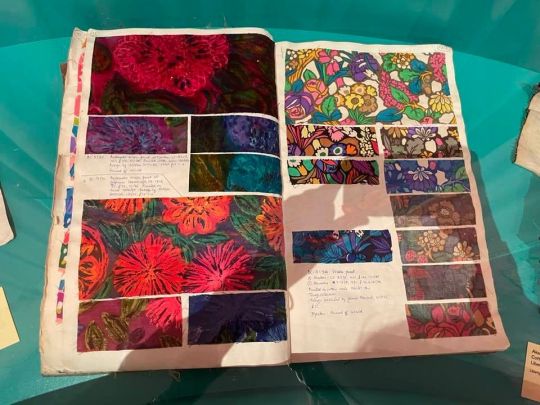

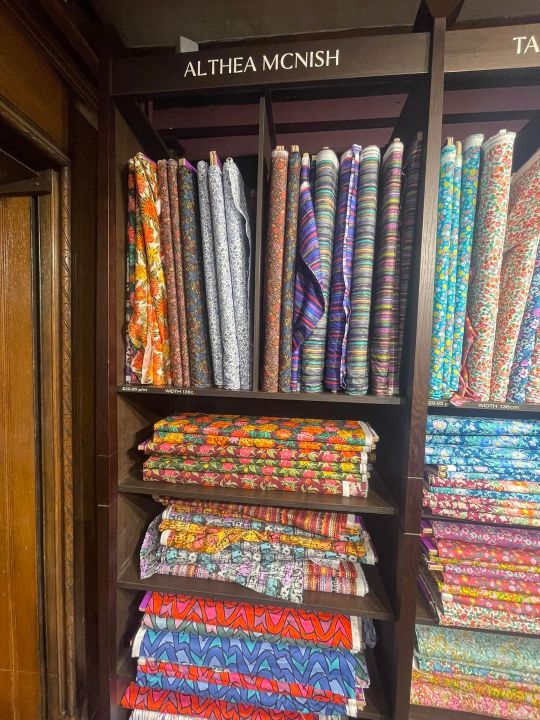

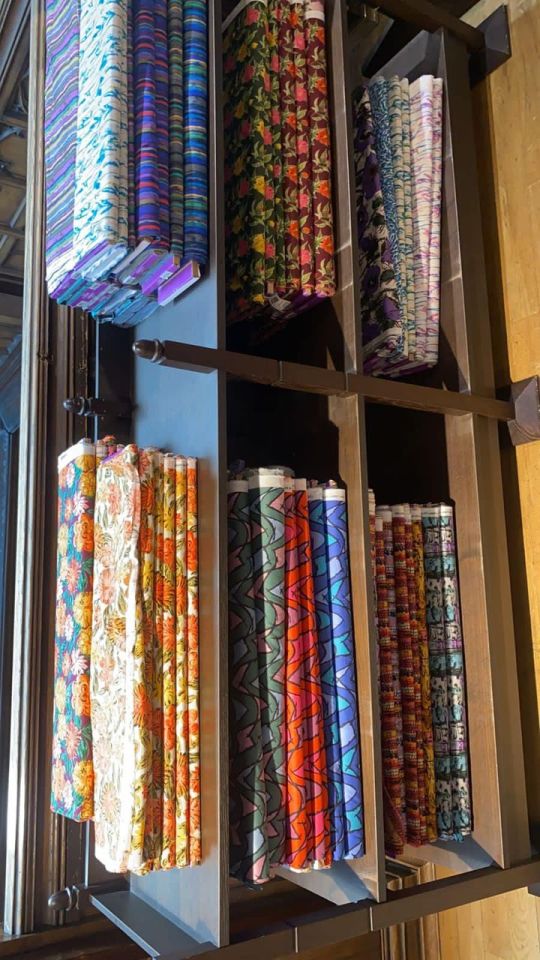

S E X Y P I N K
Seen on Facebook....
Liberty Mission Accomplished ... this is all that’s left of the Althea McNish limited collection; it sold like hot cakes with many designs no longer available)
#sexypink/Anthea McNish#sexypink/fabric designer#sexypink/Trinidad and Tobago#tumblr/Althea McNish#tumblr/fabric#liberty of london#archives#history#fabric#history of textiles#Trinidad and Tobago Textile Artist Anthea McNish#Textile Arts#women in textile arts#Caribbean Textile Artists#Female Caribbean Textile Artists#sexypink/Caribbean women Textile Artists#pioneers#icons
10 notes
·
View notes
Text


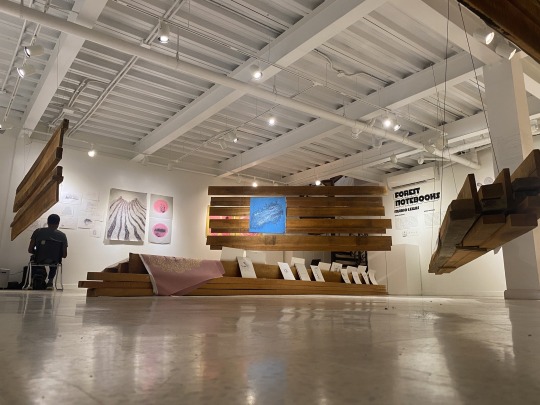
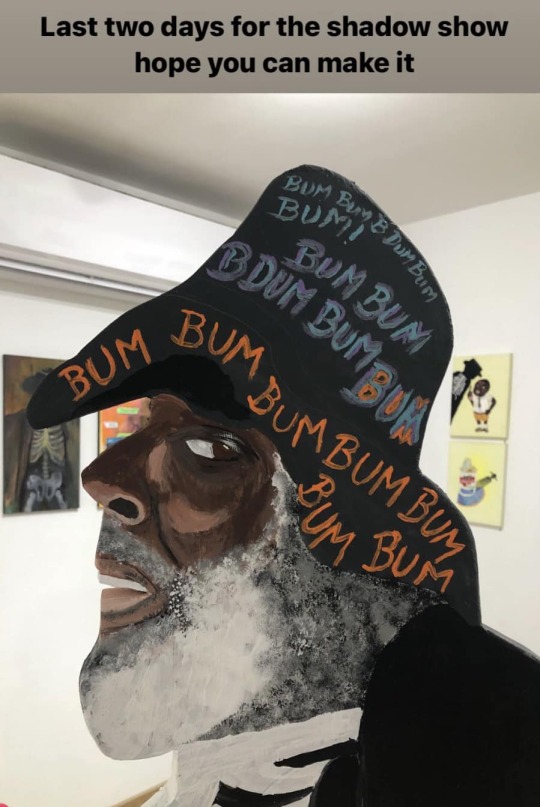



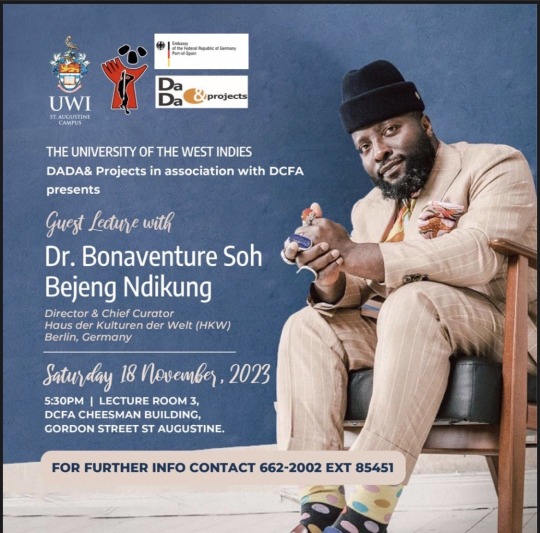
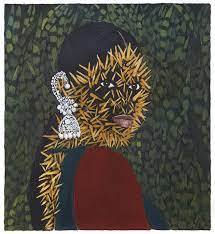
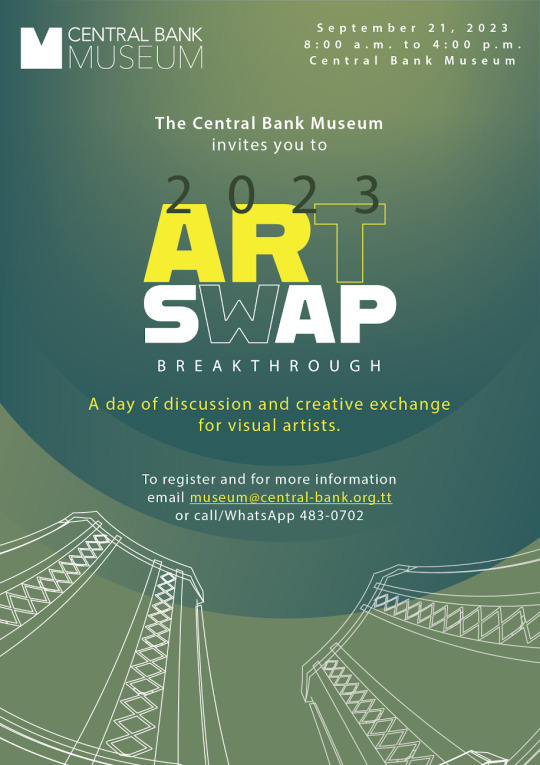
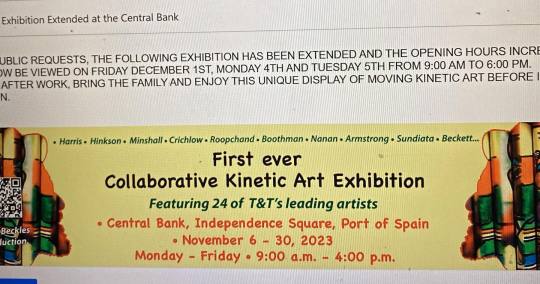




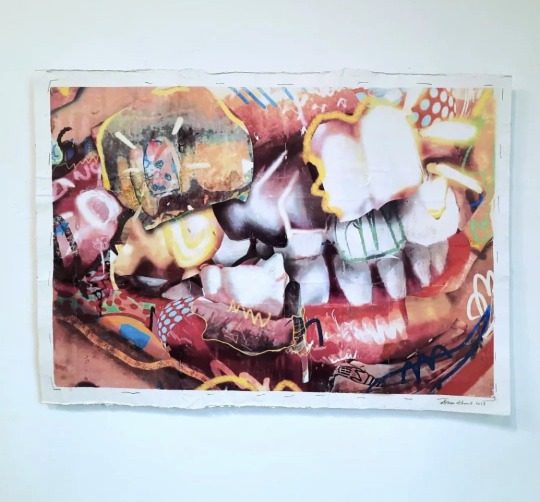




Sexypink - Another year of fully gorging on everything Art. So many shows and projects, passings and beginnings. Happy 2024 to all....here is a look back of some of the highlights and challenges of the year.
Sybil Atteck continues
Mario Lewis Part I and II Forest Notebooks
Shadow Show @ A Space inna Space - The Frame Shop
Jamaican Artist Catrina Coombs
Marinna Shareef's mind benders
Deltex Artshop owner and legend in her own right Christine Millar passes away
Dr Bonaventure gave us wisdom and then some
Guadeloupan Kelly Sinnapah Mary
Art Swap @ Central Bank of Trinidad and Tobago
Guy Beckles Kinetic Collaborations with 24 Contemporary Artists
Barbadian Scottish Alberta Whittle causes controversy
Adele Todd shows in Seattle
Sheena Rose sells to GOAT Venus Williams
Sarah Knights paints THE KING
Jamaican Stephen Schmid shows teeth
Sharon Camille Harding ~ Rest in Peace
Coretta and Martin's sculpture causes awe and confusion
Leroy Calliste (The Black Stalin) dies.
#sexypink/a year in Art#sexypink/Caribbean Art 2023#sexypink/2023#tumblr/Art history#tumblr/Art in the Caribbean and beyond 2023#tumblr/a year in Art
1 note
·
View note
Text

Sexypink - Outsoil - A look at Caribbean and Diasporic Artists in exile.
..............................................................................................................................
[Outsoil - forms in exile in the collection of the National Center for Fine Arts]
The Cnap dedicates the second "Zoom" of its collection to exiled artists, inviting curators Estelle Nabeyrat and Pedro de Llano. Discover a new artist each week!
"This selection of 20 works is based on work started in 2017 as part of the Cnap Curatorial Research Fellowship." The title is inspired by the Cnap collection’s “above ground” condition, defined as a “without walls” background, originally intended for circulation.
This survey identified an unreleased set of 26 contemporary artists (1945 to the present). Mostly exiled in France -, they have left the Latin American and Caribbean territories.
Crossing the history of the Cnap’s collection and that of its works with various sources from the social science and the history of art, “Hors-sol” initially sought to propose an updated definition of the term “exile”.
Including artists who have left authoritarian regimes, post-colonial conflict zones as well as skeptics and disappointments of the Cuban Revolution, the different forms of exile encountered range from political exile to the quest for freedom, necessary for artistic expression. The variety of artist profiles, their journeys have allowed to clarify an intersectional problem, which has enriched this research.
This selection, drawn from the corpus we have constructed, takes into account the diversity of forms of exile related to socio-political problems and translates various degrees of liberticidal pressure exerted on artists. "Hors-sol" also offers, throughout the history of the Cnap acquisitions, a unique reading of the policy of welcoming artists exiled in France. »
Estelle Nabeyrat and Pedro de Llano
Visual: "The People of the Parrot Land", Netto, 1979
© D.R./Cnap/Photo : Fabrice Lindor
@estellenabeyrat
#sexypink/National Centre for Fine Arts#sexypink/CNAP#sexypink/Latin American and Caribbean Artists#sexypink/Cuban Artists#tumblr/CNAP#tumblr/Cuban and Latin American Art#tumblr/Artists in Exile#artists in exile#Cuban Artists#Latin American Artists#CNAP
4 notes
·
View notes
Photo
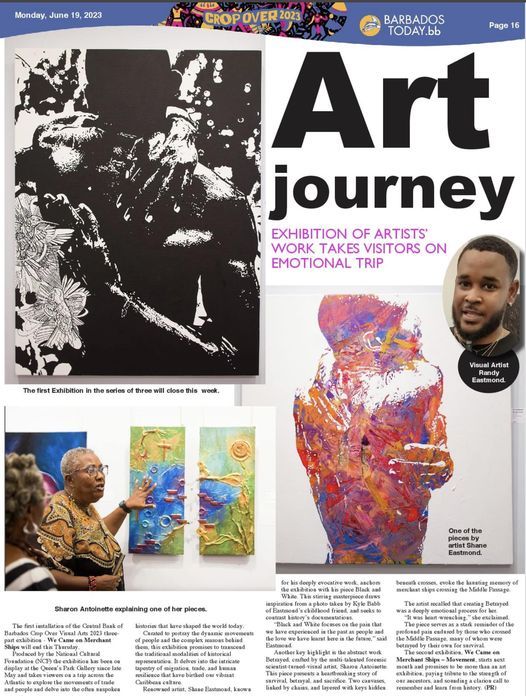
Sexypink - “The first installation of the Central Bank of Barbados Crop Over Visual Arts 2023 three part exhibition - We Came on Merchant Ships will end this Thursday.Produced by the National Cultural Foundation (NCF) the exhibition has been on display at the Queen’s Park Gallery since late May and takes viewers on a trip across the Atlantic to explore the movements of trade and people and delve into the often unspoken histories that have shaped the world today.Curated to portray the dynamic movements of people and the complex reasons behind them, this exhibition promises to transcend the traditional modalities of historical representation.
It delves into the intricate tapestry of migration, trade, and human resilience that have birthed our vibrant Caribbean culture.Renowned artist, Shane Eastmond, known for his deeply evocative work, anchors the exhibition with his piece Black and White. This stirring masterpiece draws inspiration from a photo taken by Kyle Babb of Eastmond’s childhood friend, and seeks to contrast history’s documentations.“Black and White focuses on the pain that we have experienced in the past as people and the love we have learnt here in the future,” said Eastmond.
Another key highlight is the abstract work Betrayed, crafted by the multi-talented forensic scientist-turned-visual artist, Sharon Antoinette.
This piece presents a heartbreaking story of survival, betrayal, and sacrifice. Two canvases, linked by chains, and layered with keys hidden beneath crosses, evoke the haunting memory of merchant ships crossing the Middle Passage.
The artist recalled that creating Betrayed was a deeply emotional process for her.“It was heart-wrenching,” she exclaimed.
The piece serves as a stark reminder of the profound pain endured by those who crossed the Middle Passage, many of whom were betrayed by their own for survival.The second exhibition, We Came on Merchant Ships – Movement, starts next month and promises to be more than an art exhibition, paying tribute to the strength of our ancestors, and sounding a clarion call to remember and learn from history.” (PR)Barbados Today
#sexypink/Barbadian Art#sexypink#Central Bank of Barbados#sexypink/Crop Over 2023#tumblr/Barbadian Art#tumblr/Barbadian Artists
2 notes
·
View notes
Text
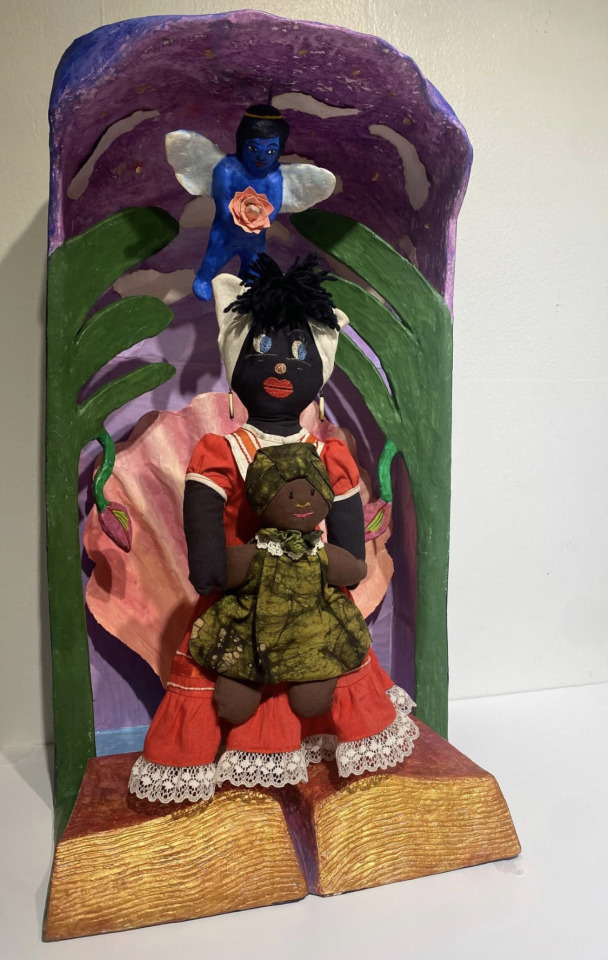
Sexypink - Medulla Art Gallery presents
West Indian dolls, a portrayal of blackness.
by WENDY NANAN
NOW SHOWING
(*There won’t be a formal opening but you can visit anytime for the duration of the exhibition)
Exhibition continues until: Friday 29th September, 2023
FREE ADMISSION - OPEN TO THE PUBLIC
Gallery hours: Mon-Fri 10am-6pm, Sat 11am-2pm.
Address: #37 Fitt Street, Woodbrook, Port of Spain.
For more information please contact:
Telephone: +1(868)680-1041, +1(868)622 -1196
Email: [email protected]
ABOUT THE EXHIBITION
The dolls were acquired on travels with my father throughout the Caribbean, from Caracas to Cuba, in the 1990’s. Bought in handicraft shops, made for the tourist trade, I was first intrigued by the political and social implications of how we were representing ourselves in a modern, post colonial society.
Why the use of the Aunt Jemima black face and the exotic and quaint depiction of servitude to appeal to wealthy foreigners? Why the acceptance of racist stereotypes and negative imagery, sourced from American caricatures of black people – Sambo Memorabilia?
But I also collected them because they were beautifully and intricately handmade, showing the signatures of their creators, much like fingerprints on ancient Sumerian pottery. I imagined the women making the dolls, hoping for sales, having to pander to the ingrained racist and sexist views of the buyers. More concerned with everyday survival than perpetuating these prejudices.
I recently saw a Facebook post asking for a photo-op of a coconut vendor with donkey cart. We are still painting pictures of La Belle Creole, with wooden ajoupa houses in forested clearings. In my childhood, Tourist Annie walked the streets of Port of Spain, looking very out of place. How do we see and understand ourselves, descendants of the many mixtures of colonisers, slaves and immigrants? And how have we commercialised this history and imagery into clichés to make it marketable for consumption by outside worlds? Is this the masque of our blackness as island people?
Wendy Nanan 2023
ABOUT THE ARTIST
Born in Trinidad and Tobago in 1955, Wendy Nanan is the first Indo-Trinidadian, and among the first Caribbean women artists to have a long and sustained professional practice. She obtained her BFA at Wolverhampton Polytechnic, England in 1979. Her work is included in many public and private collections, including Trinidad and Tobago’s National Museum. In her practice, Nanan takes on core questions at the heart of historical and contemporary struggles about identity, culture and power in the region. She has produced work that is at once historically and geographically specific to the place she inhabits, and timeless, gently provocative and persistently infused with her feminist politics. While Nanan is deeply respected by peers and critics in the Caribbean, she remains an under-attended-to artist, in part due to her determined locally-situated practice, she has remained in Trinidad since completing art school in 1980, and is famously reclusive, her philosophy being that “it is more important to create the work than to seek an audience for it.”
by Dr. Andil Gosine
Image: Caribbean Madonna, 2023
Artist Bio Text: Dr. Andil Gosine
Follow @medullaartgallery on Facebook and Instagram
If you wish to subscribe to our invitation list kindly email: [email protected]
**Update: https://newsday.co.tt/2023/09/25/artist-wendy-nanan-explores-post-colonialism-identity-through-dolls/
#sexypink/Wendy Nanan#sexypink/Medulla Gallery#trinidad and tobago#shows on now#Wendy Nanan#Medulla Gallery#West Indian dolls#la belle creole#tumblr/black face#tumblr/medulla Art Gallery#tumblr/sambo memorabilia
1 note
·
View note
Photo

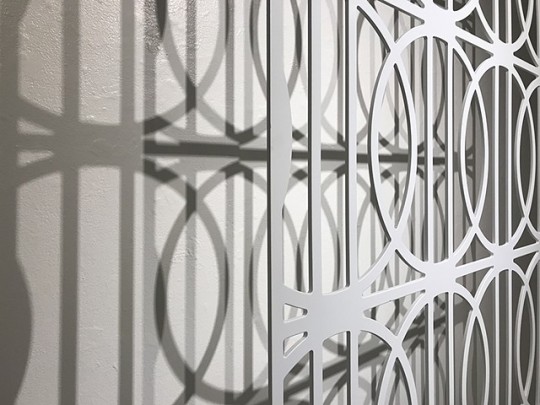
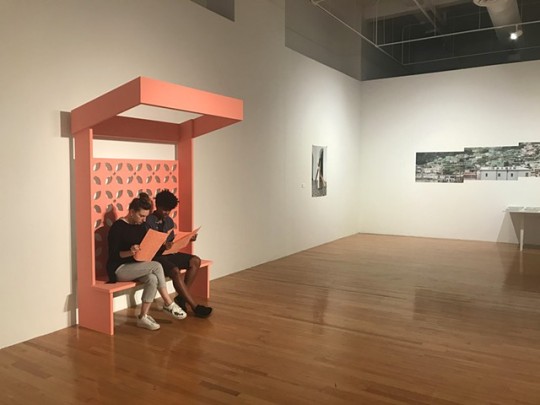
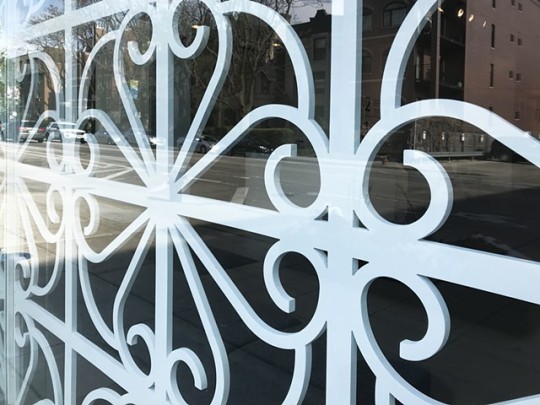
S E X Y P I N K
no existe un mundo poshuracán: Puerto Rican Art in the Wake of Hurricane Maria - Nov 23, 2022–Apr 23, 2023 at the Whitney in New York
Sexypink takes a look at the work of one of the Puerto Rican Artist Edra Soto. The piece that is part of the exhibition is titled-:
Graft, 2013 - ongoing
Architectural intervention
Wood or adhesive
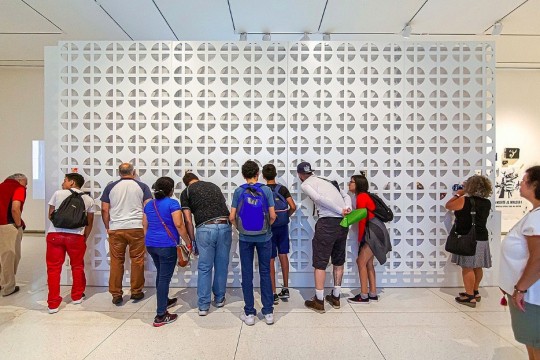
Iron screens (rejas) became ubiquitous in the architecture of post-war Puerto Rico due to the security they provided and their ability to allow for cross ventilation. Today, theses iron rejas are not only viewed as a protection device as much as a language that pertains to the island’s visual culture. Graft alludes to the aesthetic, decorative and nostalgic qualities of these iron fences by transplanting its representation to structures in the US.
A take-away publication is the literary component that complements this project. Bilingual essays, in which writers from a variety of disciplines, such as art history, art, architecture and politics amongst other fields, reflect on rejas in the contexts of their individual fields of expertise.
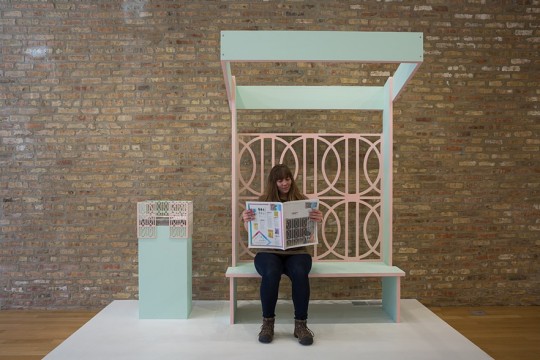
Poet, playwright, and Nobel laureate Derek Walcott, a native of Trinidad and Saint Lucia, asserted in 2002 that, "the strength and beauty that will begin to be unique in Antillean architecture is in its individual genius, in the impulse to be elaborate in a flourish, to convey our light and a lightness of heart." This decorative bravura comes across in the 2009 book La Ciudad de los Balcones, in which Edwin R. Quiles Rodriguez and Consuelo Gotay display, describe, and diagram examples of the distinctive Creole-style family homes of the Villa Palmeras area of San Juan, Puerto Rico. Quiles relates that the "shotgun" layout of these working-class residences was adapted from the Yoruba dwellings of African slaves, which was developed in Haiti and then migrated abroad with hacienda owners after the slaves revolted. The term balcon describes the indoor-outdoor porch spaces that proliferate throughout the island, and are fenced off by ironwork grills known as rejas, whose intricate patterns recall Arabic mosaic designs. In wooden form, these rejas are the foundation of Edra Soto's GRAFT project-- although a wooden reja also appears on the Casa Blanca, the centuries-old house of Puerto Rico's governor.

Even more than colonial and modern styles, vernacular architecture shows the full breadth of the island's historical influences, from before, during, and after colonialism. Appropriating the mesmerizing designs of rejas and transposing them on to structures in the mainland U.S. provokes questions. Can a nation that has so freely appropriated the land and resources of Puerto Rico, while consigning its residents to second-class citizenship and exorbitant government debt, be itself appropriated as a screen upon which Soto can project the (wooden) screens of her Boricua childhood? Or does the gesture become a multiculturalist token of assimilation, an exotic garnish that helps to erase the trauma of conquest, exploitation, and slavery? Can such an appealing but unobtrusive architectural element even register with the average American viewer as an intervention at all? Learning not only the elements of Caribbean architectural style, but learning to read all buildings as indices of complex and contentious histories, can offer a great deal to laypeople viewing the exhibition. And, through this publication as well as through the installation, GRAFT can suggest new interdisciplinary conversations for enthusiasts and experts both within and outside architecture.
- Albert Stabler
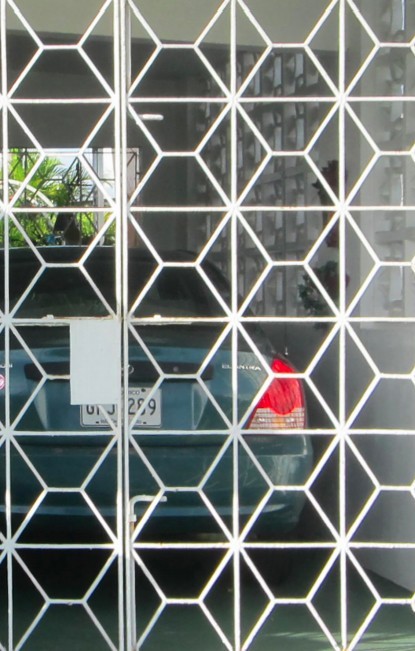
#sexypink/Edris Soto#sexypink/Puerto Rican Artists#sexypink/Puerto Rican Art at the Whitney Museum#Hurricane Maria#Donald Trump#Puerto Rico#puerto rican artists#the whitney#Edra Soto#tumblr/The Whitney#tumblr/Edra Soto#no exista un mundo poshuracan#Tumblr/Puerto Rican Art in the wake of Hurricane Maria#Albert Stabler
1 note
·
View note
Link
~Sexypink~ Worth a look.
#sexypink/Tate Britain exhibition#sexypink/Caribbean/British Artists and Art#sexypink/Caribbean Artists#history#painting#meaning#historic significance#Tate Britain#exhibitions#generational#islands#caribbean#Tumblr/Tate Britain#Tumblr/Caribbean British Art
1 note
·
View note
Link
~Sexypink~ As the Artist Sonia Boyce represents Great Britain at the Venice Biennale, watch her thought provoking documentary.
#Sexypink/Sonia Boyce#Sexypink/Venice Biennale/British/Caribbean Artist#Sexypink/Biennales#Tumblr/documentaries#Tumblr/Black. British/Caribbean Artists#documentaries#Black. British/Caribbean Artist#Sonia Boyce#Asian#Caribbean#Black#Venice Biennale#film#hidden history#Art History#opinion#questions#answers
1 note
·
View note
Link
~Sexypink~ Sonya Clark deals with history.
#15 creative women#Sexypink/Sonya Clark#Sexypink/Trinidad parentage/Artist#American history#Sonya Clark#racism#symbolism#imagery#legacy#Jamaican parentage#art making#American Artist with Caribbean parentage
1 note
·
View note
Link
~Sexypink~ A good read.
#taino#Sexypink/History/Caribbean/Art#Art#Caribbean artifacts#history#important knowledge#culture#Sexypink/Histories/Taino/Caribbean#The New York Times#Metropolitan Museum#Americas
6 notes
·
View notes